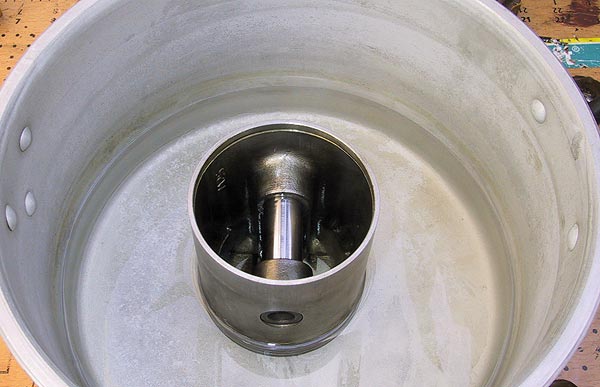 |
The gudgeon pins are an interference fit in the pistons. When a piston is placed in about 2" of hot water the subsequent expansion is enough to release the pin so that it can be lightly tapped out. |
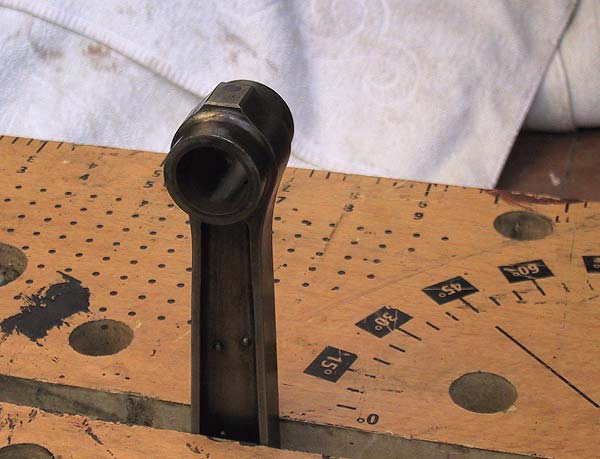 |
Refitting of the pistons is easiest when the conrod is secured in a workmate or soft-jawed vice. |
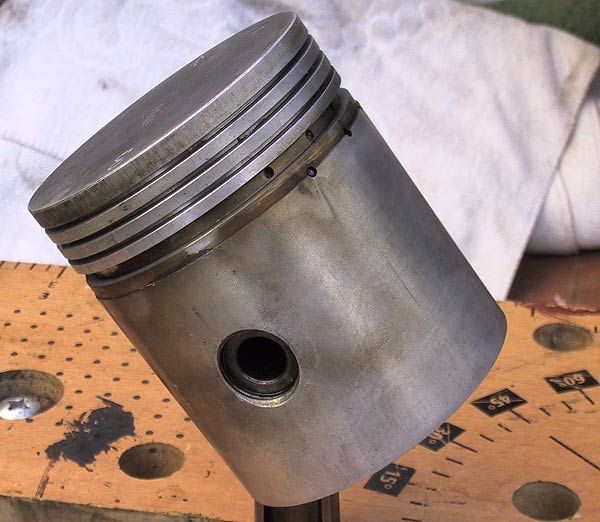 |
With the piston still hot it is a simple matter of lining up the holes and pressing the gudgeon pins into position. This engine had been fitted with PHC (Hepworth) solid-skirt pistons. Rolls-Royce went through a phase in the 1970s and 1980s where they recommended this piston type; they subsequently reverted to original patterned split skirt designs. |
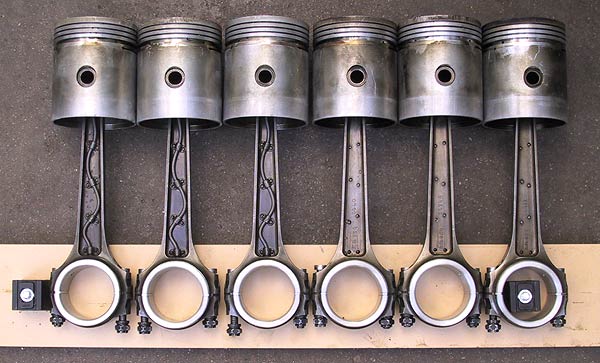 |
All six pistons are back on their original conrods. Left to right they are for cylinders 1 to 6. On the early type rods, with the external oil pipe, the rods are installed with the oil pipes facing the centre main bearing. All pistons are fitted with the same orientation irrespective of conrod alignment. There are lubrication holes under the lower ring groove; the exhaust side is a series of drillings whilst the opposite side is a slot. Number five piston had previously been fitted the wrong way around. |
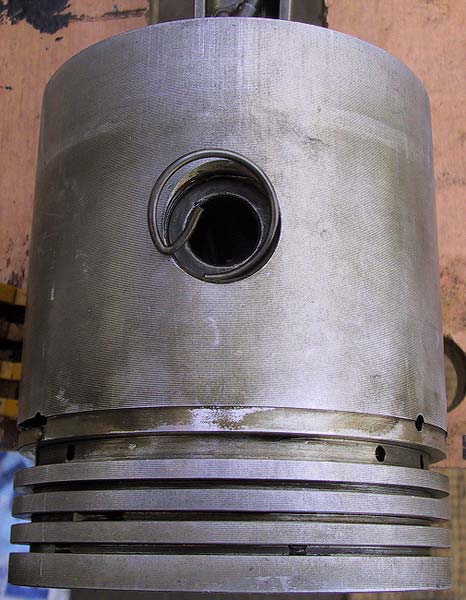 |
The PHC pistons locate the gudgeon pins by using circlips inserted into slots. These are removed and installed very easily with pointed-nose pliers. |
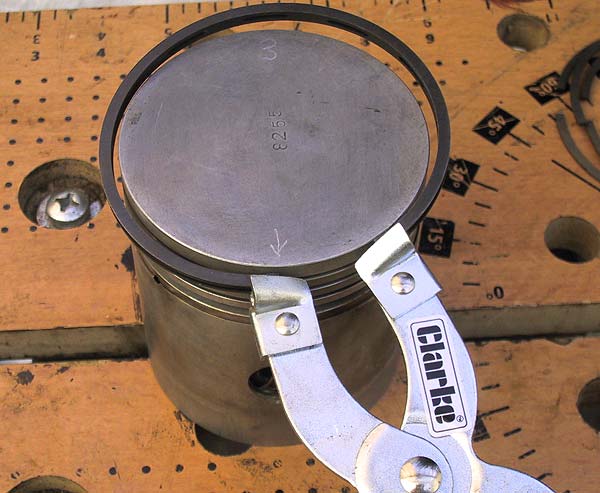 |
All of the piston rings had previously been matched to the bores to ensure that the gaps were within tolerance. Piston ring pliers make fitment simple and straightforward as long as care is exercised. |
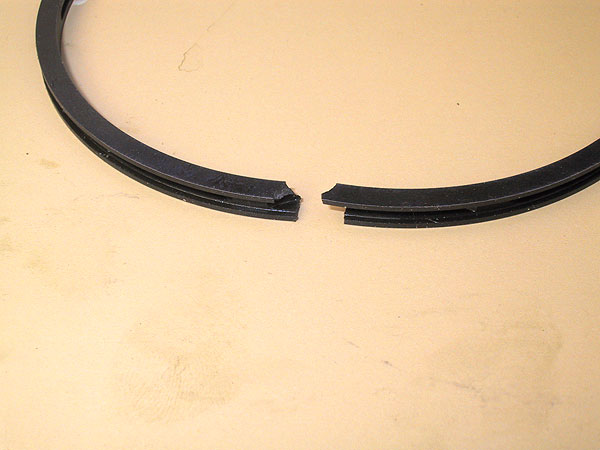 |
This ring snapped as soon as it was expanded, which would indicate that there was an inherent fault. Fortunately, a couple of spare rings had been ordered with the main batch in case this problem occurred. Better now than when running the engine. |